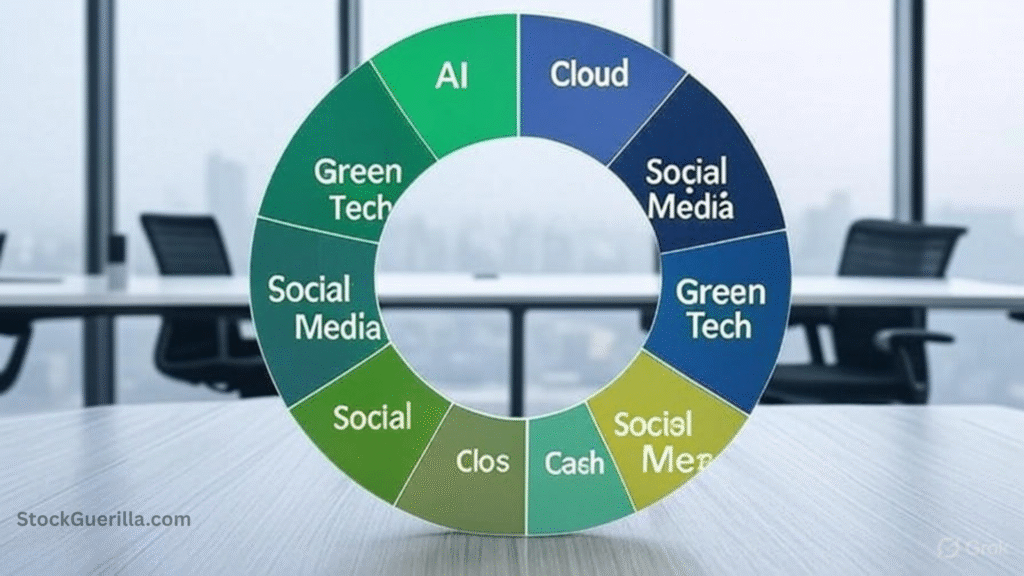How is the Tech Sector Performing Amid Regulatory Changes?
Technology isn’t just a convenience—it powers modern life and drives the global economy. From smartphones to artificial intelligence, tech shapes how we live, work, and connect. Unsurprisingly, the technology sector is massive, valued at nearly $19 trillion worldwide.
Big players like Apple, Microsoft, and NVIDIA have delivered enormous returns, attracting investors from all walks of life. But tech stocks are a double-edged sword: they can generate outsized gains but also come with high volatility and regulatory risks.
With governments worldwide tightening regulations on data privacy, antitrust practices, and artificial intelligence, many are asking: How is the tech sector performing amid regulatory changes—and should you still invest in it?
This guide breaks it all down. You’ll learn what defines the tech sector, how it has performed, what regulations mean for investors, and 10 proven tips to invest smartly in tech stocks without losing sleep.
What Is the Tech Sector?
The technology sector covers a wide range of companies that create or support digital products and services. Examples include:

- Hardware manufacturers (e.g., Apple, Dell, NVIDIA)
- Software developers (e.g., Microsoft, Adobe)
- Cloud computing & AI firms (e.g., Amazon Web Services, Google Cloud)
- Social media platforms (e.g., Meta, TikTok)
- Semiconductor companies (e.g., Broadcom, Intel, AMD)
Because technology underpins nearly every business and industry, it’s one of the most influential and fast-growing sectors in the stock market.
Performance of the Tech Sector (2017–2025)
Tech stocks have dramatically outperformed the broader market in recent years.

- From 2017 to mid-2025, the tech sector returned 440%, compared to just 150% for the S&P 500.
- Much of this growth came from the so-called “Magnificent Seven”: Apple, Microsoft, Alphabet (Google), Amazon, NVIDIA, Meta, and either Broadcom or Tesla.
- By May 2025, these seven companies made up about 30% of the entire S&P 500 index.
What makes the sector unique is constant innovation. Advances in AI, machine learning, cloud services, and automation are changing industries overnight. At the same time, new regulatory pressures—from data protection laws to antitrust lawsuits—are shaping the landscape.
The Impact of Regulatory Changes
In 2025, regulators worldwide are scrutinizing Big Tech like never before. Here’s how it affects investors:
- Data Privacy Laws – Stricter rules in the U.S., EU, and Asia mean higher compliance costs for social media and cloud companies.
- AI Regulation – Governments are introducing guardrails to ensure ethical use of AI, affecting companies like OpenAI, Microsoft, and Google.
- Antitrust Actions – Mega-firms like Apple and Amazon face lawsuits for monopolistic practices, which could slow their growth.
- Cybersecurity Mandates – Rising cybercrime means more investment in security, benefiting cybersecurity firms like CrowdStrike and Palo Alto Networks.
- Environmental Regulations – Tech companies are under pressure to cut carbon emissions, leading to new opportunities in green data centers and sustainable chips.
Takeaway: Regulation may squeeze short-term profits but also fosters healthier, more transparent markets in the long run. Investors should track these shifts closely.

Also Read: What are the Best-Performing Stocks in the Transportation Industry?
10 Smart Tips for Investing in Tech Stocks

Investing in tech can be rewarding if done wisely. Here are 10 actionable strategies:
1. Know the Risks
Tech stocks are volatile—a hot product launch can send prices soaring, while a failed update or new law can tank them overnight. Start with diversified exposure (e.g., ETFs) instead of betting everything on one company.
2. Look at the Right Numbers
Key financial indicators to analyze:
- Revenue growth – Is the company expanding consistently?
- Profit margins – Are they sustainable?
- Cash flow – Does it generate free cash?
- P/E ratio – Is the stock overpriced compared to earnings?
For user-driven platforms (like Meta or TikTok), check monthly active users (MAUs) as a health indicator.
3. Check Liquidity
Liquidity shows whether a company can cover short-term obligations. Look at:
- Current ratio (Current assets ÷ Current liabilities)
- Quick ratio (Excludes inventory for a stricter measure)
A score above 1.0 is usually a sign of financial strength.
4. Don’t Ignore Long-Term Debt
High growth sometimes hides heavy debt. Key ratios:
- Debt-to-equity (D/E)
- Debt-to-assets (D/A)
Compare these against competitors to spot financial red flags.
5. Pay Attention to Forecasts
Future earnings often matter more than past performance. Watch analyst forecasts and company guidance, but stay cautious—optimistic projections can disappoint.
6. Keep Up with Industry News
Tech evolves at breakneck speed. Regulatory announcements, product launches, or chip shortages can move entire markets. Follow reliable sources like:
7. Look at Company Leadership
Strong leaders drive innovation. For example, Satya Nadella at Microsoft transformed the company by prioritizing cloud services. Look for CEOs with a track record of adaptability, vision, and execution.
8. Don’t Put All Your Eggs in One Basket
Even giants stumble (remember when Nokia and Blackberry dominated?). Protect yourself with diversification:
- Mix large-cap, mid-cap, and emerging tech stocks.
- Use ETFs like XLK (Technology Select Sector SPDR Fund).
9. Think Long Term
Tech stocks can be noisy in the short run, but over time, innovation fuels compounding growth. Avoid panic selling on dips. Adopt a buy-and-hold mindset.
10. Use Technology to Your Advantage
Leverage digital tools to invest smarter:
- Robo-advisors for passive investing.
- Automatic rebalancing to stay diversified.
- AI-based platforms for trend analysis.

Also Read: How to Invest in Dividend-Paying Stocks?
Case Study: NVIDIA’s Rise
Take NVIDIA as an example. Once known mainly for gaming GPUs, the company pivoted to AI chips and data center solutions. Its stock soared over 200% in 2023–2024, making it one of the fastest-growing companies in history.
Lesson: Innovation + strong leadership + industry demand can create generational winners.
Conclusion
The tech sector remains one of the most powerful engines of growth, even as it faces heightened regulations. While short-term volatility is inevitable, long-term investors who diversify, follow industry trends, and focus on fundamentals can unlock significant opportunities.
Bottom line: Don’t fear regulatory changes—understand them, adapt, and use them to your advantage.
👉 If you’re ready to explore the tech sector, start with a balanced portfolio, long-term mindset, and smart tools to guide your journey.

Also Read: What are the Market Expectations for Upcoming
Frequently Asked Questions (FAQs)
Q1. Is the tech sector still a good investment in 2025?
Yes—but expect slower, steadier growth due to regulations. Focus on diversified exposure.
Q2. Which tech areas look most promising?
AI, cybersecurity, cloud computing, and green technology are among the hottest growth sectors.
Q3. Are ETFs safer than individual tech stocks?
Yes, ETFs reduce risk by spreading exposure across many companies.
Q4. How do regulations affect tech investments?
They may increase costs in the short term but create fairer competition and new innovation opportunities long term.
Q5. Should beginners invest in Big Tech?
Yes, but not exclusively. Pair big names like Apple or Microsoft with emerging innovators and ETFs.




Post Comment